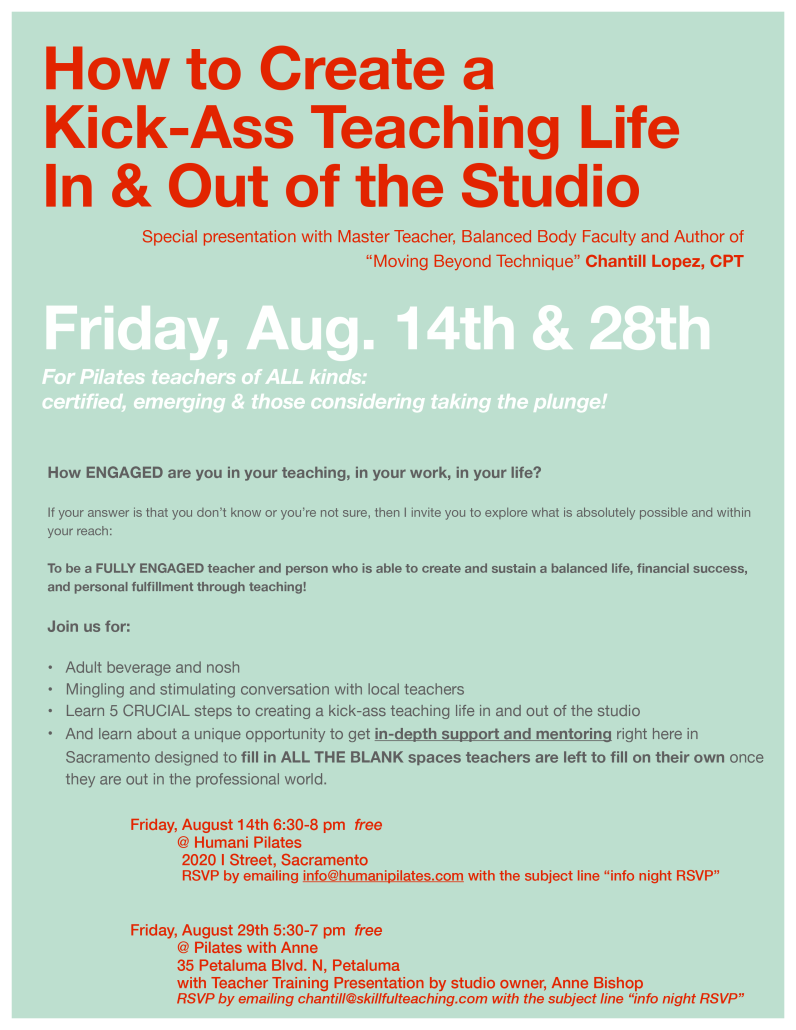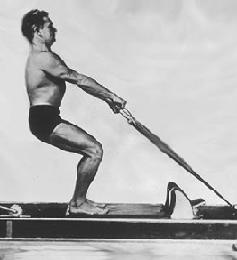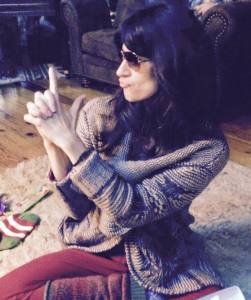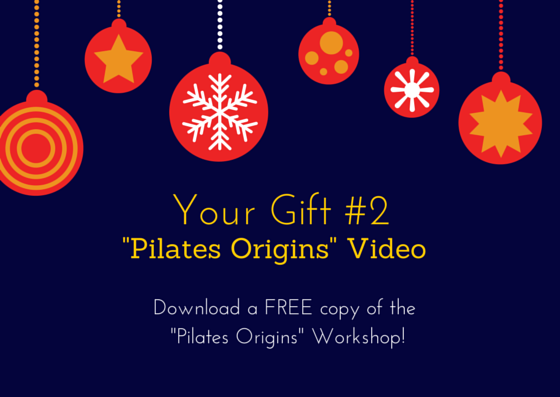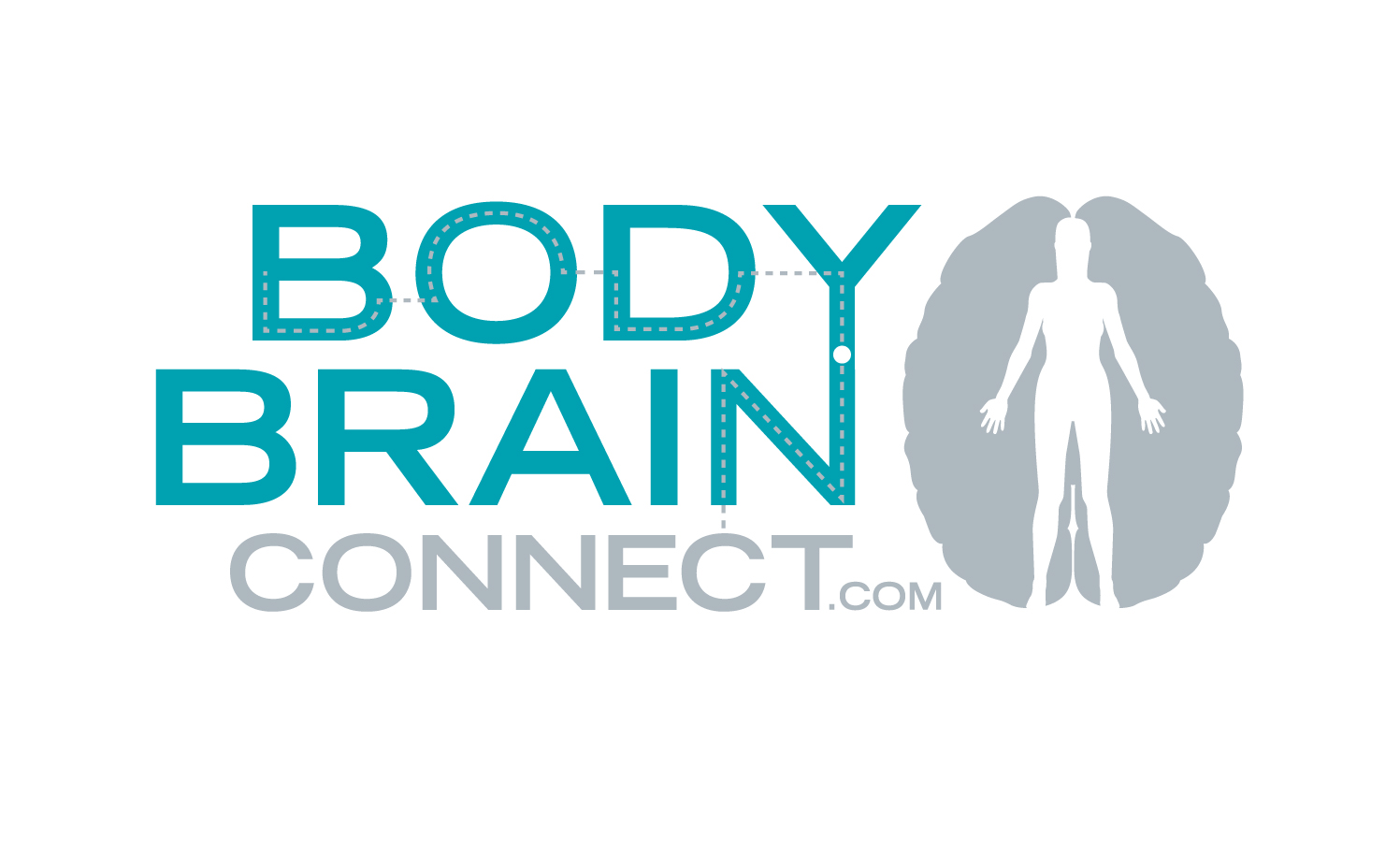If you want a TOTALLY KICK-ASS teaching life in & out of the Pilates studio…READ THIS!
/0 Comments/in Blog, Featured /by Chantill…To inspire you to take action, make change, investigate, be honest and dig deep into what would REALLY change the way you design your business, your teaching, and how it all fits into your REAL LIFE!
One of the things I am MOST COMMITTED to achieving through Skillful Teaching is helping teachers develop their inner and outer teacher; to support them in creating a fulfilling, long-lasting, sustainable, and authentic teaching career that is a reflection of their personal values and is in balance with ALL they want to BE, DO, and HAVE.
To that end…here we go:
1. Make SELF-PRACTICE a priority no matter how small NO MATTER WHAT!
My greatest piece of advise is to create a self-practice program for yourself that ABSOLUTELY, 100% and without compromise reflects the realities of your life, your teaching schedule and your personal level of motivation.
What I mean by that is lower your expectations and be kind and loving to yourself. Be in love with the reality of all the demands on your life and your time and create a practice that FITS.
If you are best with a 20 minute workout everyday then do that. If you thrive on the long hour practice once a week then do that. Do whatever creates the least resistance and feels the best. This is the ONLY way you are likely to create a CONSISTENT, EMPOWERING, AND EFFECTIVE PRACTICE.
And you practice is a dedication to your body, your health, your mental state, your business, your learning, your students, your LIFE. Figure out how to actually get it done!
2. Know what you STAND FOR.
What do you personally and professional stand for? What are your priorities, your purpose for teaching, your unwavering reasons for showing up?
Having a strong point of view from which to teach helps ensure two things:
One, that you ACTUALLY KNOW what you stand for and can stand for it or fight for it and turn it into a powerful vision for your teaching and your business. MOST teachers have no real idea what they stand for in their teaching and their life and so when faced difficult decisions or challenges flounder and flail without direction. This makes maintaining a strong teaching presence very difficult!
Two, that you can ATTRACT STUDENTS who share your vision and your point of view in some way. When you are clear, you clearly draw the RIGHT PEOPLE to you. When you draw the right people to you, they are more likely to stay! Woot woot! Can you say Student Retention!
3. Be where you are and USE WHAT YOU KNOW.
This one comes from years and years of being an education junky and then more years helping education junkies kick their “learning” habit.
YES! obviously learning is essential to teaching. AND YET for 90% of teachers they never use 90% of what they learn.
We are addicted to the acquisition of stuff and in this case the “stuff” is new material, knowledge, tricks, tools, etc. We are always looking for the next shiny object, which is – in all honesty – just a distraction from actually having to USE THE KNOWLEDGE WE HAVE!
Mostly, I believe this happens because it’s easier (less risk) to acquire knowledge than to integrate, translate, articulate and put it into practice in a meaningful way. We are afraid of failing, of not getting it right, of not fully understanding and we like to be COMFORTABLE. Learning is comfortable (for the most part 😉 Putting yourself out there and testing your knowledge is less comfortable.
I know this is not true for everyone, but it is largely true even if we don’t want to admit it.
The other possibility is that we feel like to be of value we have to know a lot. Come on! How many of you believe that? I do! But I also know it’s not true!
The problem with that that learning more DOESN’T equate to knowing more or being better. It mostly just leads to information fatigue, a lot of wasted paper, and a maxed out credit card.
I promise you, you will be MORE SATISFIED if you spend time becoming masterful at a few things and spending more time figuring out how to effectively apply those things and working on YOURSELF (self-care and self-practice) so that you can always be at your best.
4. Cultivate community.
This one is actually so simple and yet many of us find it incredibly difficult especially if we don’t teach in a studio with other teachers or come from a small town OR find ourselves isolated for whatever reason. BUT it is SO IMPORTANT!
We all need support. We need personal and professional support. We need to know we are not alone. We need to have a place to ask questions, be a part of exciting and creative solutions, learn and explore. We need to be guided and be guides to others.
Whether it’s a physical in-person community or a virtual community I encourage you to find a place to connect with other teachers on a REGULAR BASIS.
Don’t be afraid to put yourself out there. Ask a question. Start a conversation. Contribute an insight. Make yourself known and heard and be a support and ear for others.
Withholding yourself from the community is in and of itself an act of selfishness on your part 🙂 And GENEROSITY is a fundamental key to success and fulfillment!
5. And finally…Be Generous!
Generosity takes many, many forms AND it is – as I said above – a foundation for fulfillment and success, both financial and otherwise. Here are they ways I encourage you to practice GENEROSITY:
Give back to yourself with self-care and self-practice. Time off. Rejuvenating food. Frequent breaks. Creative endeavors. Anything luxurious.
Keep an open mind and open heart in business. Always speak and act from a place of wishing others success and joy.
Share your knowledge, experience, insights, tips, tricks and strategies with others. If you are invested in the success of others, success will more easily come to you.
Believe and trust that there is enough to go around and that YOU have something UNIQUE to offer – just like everyone else.
Never believe you “own” your clients. Encourage them to learn from other teachers, to work with other teachers and to OWN THEIR PRACTICE with or without you. Remember it’s not about you it’s about THEM!
Give back to your community! Donate your time, your services, your money, your space to causes greater than yourself on a REGULAR basis!
Generosity begets generosity.
And that’s it! Ha! Simple, right?! It’s one of those easier said than done kind of things, but you can do it! And when you do these 5 things on a regular basis you WILL experience your teaching career in and out of the studio as being TOTALLY KICK-ASS!
With love and gratitude,
Chantill
Join me for one of two FREE Happy Hour presentations for Pilates Teachers
Friday, August 14th 6:30 – 8 pm @ Humani Pilates – 2020 I Street, Sacramento &
Friday, August 28th 5:30-7 pm @ Pilates with Anne – 35 Petaluma Blvd. N, PetalumaFive Steps to Creating a KICK-ASS Teaching Life In & Out of the Studio!
How ENGAGED are you in your teaching, in your work, in your life?
If your answer is that you don’t know or you’re not sure, then I invite you to explore what is absolutely possible and within your reach:
To be a FULLY ENGAGED teacher and person who is able to create and sustain a balanced life, financial success, and personal fulfillment through teaching!
Come and enjoy an adult beverage and nosh, mingling and stimulating conversation with local teachers and find out more about a new, unique opportunity to get in-depth support and mentoring right here in Sacramento.
Chantill will not only share 5 steps to creating a kick-ass teaching life in and out of the
studio, but introduce you to her company Skillful Teaching and the one-of-a-kind 12-month
Mentoring Program designed to fill ALL THE BLANK spaces teachers are left to fill on their own
once they are out in the professional world.Here are the questions teachers who participate in the Mentoring Program are getting answers to:
- How do I actually make money without working ALL the time?!
- How do I plan and progress my students so they are challenged and engaged for the long run?
- How do I find my niche and position myself or my business in a way that sets me apart?
- How do I teach an awesome multi-level class while keeping people safe?
- How do I hire and train teachers to work for me and KEEP THEM?
- Should I have independent contractors or employees?
- What’s the most effective way to do a first session intake?
- What’s my vision for my business and how do I market myself and/or my studio?
- How do I support my staff?
- How do I support my students and keep them motivated?
- What are the best ways to get students to do their homework?
- How do I retain my clients and keep revenue flowing during the slow times?
- How do I move to the next phase in my career or teaching?
- I’m bored and/or burnt out, what comes next?
- How do I start a teacher training program in my studio?
Pilates Origins Workshop
/0 Comments/in Blog, Featured /by ChantillPilates Origins Workshop with Chantill Lopez
One teacher’s perspective on what Pilates is, was meant to be, and can be…
SPECIAL ANNOUNCEMENT: The Fulfilled & Successful Teacher 28-Day Online Workshop starts Jan. 18th. Sign up this week (Jan. 5th-9th ONLY) and receive $250 Bonus Gift! Click HERE!
My first meeting with classical Pilates was a little bit like shaking hands with someone whose grip is just a bit too strong. I admired the boldness and confidence, but interpreted the forcefulness as narrow and limiting.
As an emerging teacher I knew myself well enough to see that my path lie in cultivating a practice that was more malleable and creative, with more options for insight and intuition — or that is what I thought I was doing.
I’ve come a long way since then and have completed the orbit — this one at least — and there is a very beautiful thing that happens when you reach this place.
In this moment there is a pause where you see connections, have a well-earned ounce of clarity, openness, and ease.
What ever you imagined you knew, you realize you may never know, and yet there is a sense of understanding and appreciation that only comes from immersion and experience. You can see from both directions. We come to these places about all kinds of things, and throughout our lives. It’s a super cool place.
In the Pilates Origins Workshop, a portion of which you are about to watch and/or listen to…
THIS IS MY GOAL: To open up the discussion without a classic or contemporary agenda; to offer teachers an opportunity to discern for themselves what it is they are teaching, how it translates into their current understanding and beliefs, and how they might more fully invest themselves in the authenticity of the method they love.
My teacher and mentor, Carol Appel, started me on this path and more recently Amy Taylor Alpers has helped me complete a part of it — understanding the philosophy and crafting a strong point of view around it. I mention this concept quite a bit in the workshop and am grateful to the interview in which Amy first shared it with me. (Listen to the interview here).
Having a strong point of view and knowing WHY we teach is crucial to our own internal satisfaction and sense of service, not to mention for strengthening the practice we help our students cultivate.
AND our point of view can be open and kind and inclusive. Having a strong point of view doesn’t mean — to me — belittling another approach, or perpetuating the belief that my point of view is better or the only “true” perspective.
Intelligence and wisdom are both manifested by willingness:
willingness to be stretched, to be wrong, to be swayed, to listen, and most of all the willingness to discern.
That is what the Pilates Origins workshop is really about. It’s about not only translating Joseph’s writings and in turn better understanding what the method was originally designed to be, but a chance to be stretched, to listen, to question, and to see what point of view feels right for each of us.
I very much hope you enjoy the recordings. You may hate what I have to say, you may respond very strongly to my comments and interpretations OR you may love it and love me (wink, wink). Either way, I applaud you for your passion and hope that in some small way the discussion gets your juices flowing, your heart pumping, and your inspiration bubbling.
I’m open to questions and comments (only nice ones though) below. Enjoy, share and Happy New Year!
With gratitude and joy,
Chantill
P.S. A reminder to never take ourselves too seriously!
Audio and Video Files (2 Hours Total)
Audio Part 1
Audio Part 2
Pilates Origins Workshop Part 2 from Skillful Teaching on Vimeo.
Pilates Origins Workshop Part 1 from Skillful Teaching on Vimeo.
Your 2014 Year-End Gifts
/0 Comments/in Featured /by ChantillHi all,
It’s been such an amazingly challenging, productive, and beautiful year! So full of ebbs and flows, creations, and insights.
I have so much I want to share with you (in fact, I literally had a whole list of things I wanted to give away), but alas have decided to do what I always tell my teachers to do and DOSE it!
However, I do have THREE gifts for you, and I hope you take advantage of each one of them!
Lots of love to everyone! And a Happy Holidays!
Chantill
-
subscribed:
0
-
Email Marketingby GetResponse
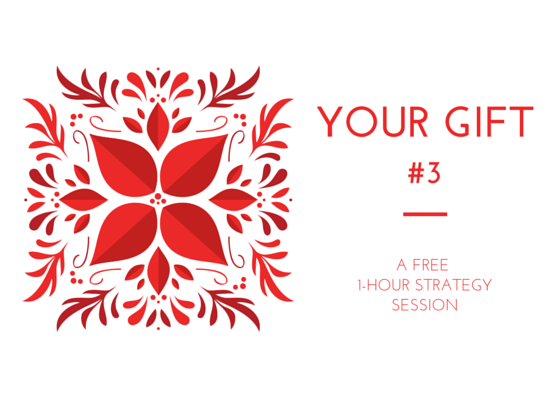
I’m giving away ONLY 10 of these, so SIGN UP NOW!
Set a course for accomplishing EXACTLY what you want in 2015! Get incredibly clear about your priorities and begin to create a strategic totally DOABLE action plan for getting where you want to go.
Get 2 Hours of Audio and Video! Sign up HERE!
The Greatest Love Letter You’ll Ever Write…is to yourself
/0 Comments/in Blog, Featured /by ChantillA Love Letter Like No Other
Dearest Friend,
I am often surprised at how long we’ve known each other; sometimes it feels like moments. And yet other times it feels like multiple lifetimes. When I think of our friendship I realize that I have rarely let other people know me in the way that you know me – all of the potential for beauty and brilliance and absolute darkness. This gives me such a sense of relief and I feel myself soften into being just who I am without any walls, defenses or excuses…and for that I am grateful.
I am grateful for your tenderness, your unconditional willingness to love those parts of me that I most want to hide from the rest of the world – my tendency to be mean and judgmental, intolerant, and impatient. You always smile at me and for me; to let me know – I think – that it’s okay, that those things are not the whole of who I am and that it is possible for all of who I am to be enough.
I have perhaps never told you how beautiful I think you are, how sweet and vulnerable, and yet so strong and steady. You have the ability to take action with a clarity and decisiveness that I both admire and wish I had myself. And yet just being around you I am reminded that I can be these things too. I watch, listen, and feel how it is possible to be malleable, open, deliberate and dedicated. You have that much brightness — it would be hard not to be affected by your presence.
There is also a generosity in you that runs deeper than I can fathom. We laugh at how you like to be the center of attention, have people wait on you, and your uncanny ability to inspire others to support your efforts and still I can see further to the truth: that what you really want is for others to be loved, cared for, seen, nurtured, affected and changed so that they might live fuller lives. No matter how often you try to convince me to do things this way or that, I never cease to feel that you love me and want me to trust myself above all else.
And so I am writing you this letter today as a way of peeling back another layer of protection from my heart and quite possibly knowing myself more honestly than ever before.
Thank you for your voice, your insecurity, your intelligence, your guidance, your trust, and your love. May every day bring you joy and may that joy be reflected in the hearts of all you meet you. I cannot imagine it could be otherwise.
With more sincerity than I sometimes say it,
I love you.
Postscript
The preceding love letter I wrote as a reminder that nothing can exist in my view unless I possess it myself; that when I see any quality in others IT PROVES the existence of that same quality in me for I CAN ONLY EVER REFLECT what I already have – whether I am willing or ready to see it or not (that’s perhaps the major kicker.)Thanks to my dearest friend, cohort, co-teacher and co-creator Cori Martinez I wrote this love letter to rediscover myself through my own eyes and hers.Can I believe that each characteristic, ability, personality trait, and quality that is contained within the letter above is in me? Is in fact a reflection of me? Can I know it as truth?*An exercise you might consider trying out ;)*
A Note On Seeking Approval, Building Confidence From The Outside In
Could you be a better teacher?
/0 Comments/in Featured /by ChantillIf there is one thing I wish, it”s that someone would have asked me this simple question when I started teaching:
“What kind of teacher do you want to be?”
I had an amazing mentor, someone who was knowledgable, tenacious and lead by example. In large part she is why I know how good it can be to have someone on your side. But I also know that there is more to teaching than what you learn from your manuals. What I know now is that we all need guidance, encouragement and that the art and craft of teaching is well overlooked, particularly the farther away from our training we get.
Could you be a better teacher?
Do you truly embody your best self when you”re teaching?
Do you challenge yourself both in expanding your knowledge of your material and yourself?
Is your work sustainable?
How do you know?
1. Do you find yourself feeling at odds with where your teaching or studio is headed, the kind of atmosphere you”ve created, the teachers you have working for you?
2. Do you feel like it”s just not exactly what makes you feel all tingly inside and say to yourself “this is what I am meant to be doing”?
3. Are there people in your business, teachers or other staff, or in your current work environment that feel like they just don”t fit, but you don”t know what to do?
4. Do you have a vision — kind of — but have never really been able to aussie online casinos implement it?
5. Are your teachers difficult to muster and do they lack interest in participating? Do you find it difficult to stay motivated and participate in your teaching?
6. Do you find yourself working harder and harder and not getting the results you really, truly want?
Does any of this ring a bell?
If any of these things are true — and there can be so much more — why keep doing the same things over and over?
They call that insanity!
There is more to teaching then you’ve been taught. Teaching is more than just knowing your material. It is more than finding the right words or techniques. Teaching is a life-long path of learning and exploration, a personal journey and an opportunity to serve. Teaching is leading, generosity and compassion.
That is why I created the Skillful Teaching. It”s the best way I could imagine being of service to my community while following my heart. If you are looking for something or someone willing to steer you in a direction that is authentic and rewarding, you”ve come to the right place!
Do this for yourself.
Join the conversation. Learn more about yourself and how to be a great teacher now and for as long as you want to teach.
Skillful Teaching will help get you on track with your deepest desires and lead you toward sustained, enjoyable (imagine!), work and success!!
Put the heart back into your teaching and back into your studio!
* Creating & Clarifying Purpose
* Building & Assessing Teaching Skills
* Developing Leadership Techniques
* Building a Value-based & Inspired Business
* Self-care & MUCH MORE..
The only risk you run is not doing this for yourself.
Be Like Pluto…
/11 Comments/in Blog, Featured /by ChantillThoughts on Student-Centered Teaching in the Pilates Universe:
Let your soul stand cool and composed before a million universes.
…and your very flesh shall be a great poem.
— Walt Whitman
Wonderful Walt Whitman — gently, deeply touching the heart of us. I came across this quote recently while working on the newsletter for our studio, Pilates Collective, and every time I read it I get chills. Would that I could stand, soul exposed, before a million universes and have my flesh turned into a great poem.
As they pertain to teaching, Walt”s words bring two things to mind.
One, that teaching can often feel like being at the center of the universe as we face the infinite complexities (should you really care to look, and I do) of the body, mind and spirit of the student in front of us.
Two, that if we live there too long, the center of even our own universe, it is to our ultimate folly.
For when we put ourselves in this place, on stage, in the spotlight, with attention only for our own performance, voice or agenda we not only get in our own way, we are in our student”s way. We deprive our student of the opportunity to inquiry for themselves and create a learning experience that is intrinsic and replicable. If their moments of discovery are not embeded in what comes from them why should they care? It”s not your experience or mine that they will remember later while lugging kids around or executing their tennis serve, it is their own.
We use our experience and insights as tools to evoke and pull forth understanding, but here”s where it can all go wrong. Too much sharing. Too much telling and correcting. Too much guiding and convincing. Too much focus on you and what you”re doing to help them get results, reach goals, feel new things. Too much center of the universe. Not enough Pluto!
When it comes to being truly effective in our teaching, you (and I) are not the center of the universe. We are Pluto! Beautiful, bright — unjustly demoted from planet-hood — sparkling Pluto. We offer a vantage point, a certain perspective, a gravitational pull, but we stand off to the side and watch how the body in front of us (the celestial center) takes it all in and makes use of it. Instead of teacher at the center, we put our student at the center. In this way we give them permission to relate to their own inner knowledge, a way of analyzing and constructing, rather than requiring them to put their trust in us alone.
Here”s a familiar scenario:
Teacher: “Let your shoulders slide down. Yes, perfect. And again…just before you draw your arms back, slide the shoulder blades down. Great.”
Next session: “Okay, now remember arm presses, shoulders release down first to initiate.”
Next session: “Don”t forget to activate from the back, letting your shoulders slide away from your ears before arms engage.”
Ad nauseam…
Do they ever really get it if we always do it this way? If we always tell, lecture, share and give them the answers?
Alternate scenarios:
Teacher: “We are going to revisit arm presses and I want you talk me through it as you do it. What comes first? What sensation initiates each phase of movement?” Or…
Teacher: “How does it feel when you do it that way? Can you do it differently and make it feel more connected/more easeful/stronger but with less effort?” Or…
Teacher: “What image comes to mind when you draw the shoulders down like that? In what other activity in your life do you do that or could you do that?”
These are just simple examples of how we can take ourselves out of center, out of the way, and put the student in the driver”s seat. It”s called student/centered teaching or learning.
In a student-centered approach we put the responsibility into the student”s hands by asking them questions and leading them to explore connections that are inherent in them. We allow them to trust themselves and rely on what their How to Alcohol buy-detox.com at Home. body can do rather than on what we tell them their body can do.
Tenets of student-centered teaching/learning:
- ‘the reliance on active rather than passive learning,
- an emphasis on deep learning and understanding,
- increased responsibility and accountability on the part of the student,
- an increased sense of autonomy in the learner
- an interdependence between teacher and learner,
- mutual respect within the learner teacher relationship,
- and a reflexive approach to the teaching and learning process on the part of both teacher and learner.’
Lea et al. (2003:322)
Student-centered teaching/learning is a deep and expansive topic which looks at sociocultural influences, environment, cognitive function, and online peliautomaatti active versus passive participation to name a few elements. For our purposes we can focus on environment, active learning and the brain/body connection.
Because student-centered teaching emphasizes the student as an active participant, it is particularly powerful in teaching movement. As we work to encourage and elicit certain patterns in the body we can utilize this turn around in our use of imagery and metaphor, tactile cueing, demonstration, and orientation.
Here are a few simple take-homes you can start playing with right away:
1. Make it personal: Within your session make specific and deliberate references to the student”s goals and previous movement experience.
Ex: “When you connect your shoulders into your back think of it like the moment before you push the lawn mower. Instead of pushing from your arms, you”re initiating from your back.” OR “Feel your hips stable when your waist twists as if you are taking the perfect back swing, powerful yet smooth and without tension.”
2. Use their words: Listen to how students repeat instructions back to you. Use their words rather than your own in order to deepen their relationship with what they are doing. It puts it back in their field of reference and means more.
Ex: A student is fond of saying “you want me to plug my shoulders in” so you say “plug your shoulders in” when you want them to release their shoulders or anchor into their back.
3. Ask them to notice/Don”t tell them to change: When trying to re-educate, a powerful tool is asking the student to actively notice where their body is in space, how it feels given a certain movement phase or sequence, and what they might do differently. Evoke a sense of curiosity and awareness in order to reinforce what you see and what you want them to achieve/retain for the longterm.
Ex: (In plank position) Ask: “What could you do differently with your neck here?” Or “How could you make this feel better in your neck and shoulders?”
When they correct from a place of internal awareness rather than your constant prompting they are more equipped to make those corrections when you are not around (the other 166 hours per week).
4. Enter their paradigm: (What the heck does that mean?…) Instead of always teaching from your point of view, shift your perspective in order to make exercises, images, metaphors etc. relative to your student”s reality. This can happen in regard to physical or psychological orientation.
Ex: Physical orientation – If they are lying down, you lie down and demonstrate. If they are sitting on the chair, you sit on the chair. If you are talking about walking while teaching footwork, stand them up and have them experience the relationship directly. You should be teaching and they should be learning in the same orientation.
Ex: Psychological orientation – If you want your imagery and metaphor to be useful step into their world and see what they would come up with. What experience do they have that will insight improved movement? Say your student has experience as a contractor, use images that related to climbing ladders, using a hammer, bending and squatting etc. And when in doubt, ask: “What image do you think of that helps you connect to your core strength here?”
This is just a starting point. I recommend you begin by playing with just one of these and see what kind of results you get. As you become more comfortable with shifting the responsibility to your student and including them more fully in the process, add in another tool. See what resonates with you, your teaching style and your students.
We are always looking for ways to make a bigger impact on our students so they want to keep coming back. Typically what we do is focus on how to improve our skills, our demeanor, and our knowledge so we perform better. What I would encourage you to do is build skills that turn the focus on improving the student”s ability to learn and retain what you teach them. This is not only liberating for your students, which makes them have more ownership in the process, it will also fuel your curiosity and bring a sense of excitement to your teaching that, as we all know, ebbs and flows.
So, take a step out of the center and embody your best Pluto-like self. Open up to newness and insight from your student. See what they have to offer and watch their universe expand and grow brighter. Pluto has a great view. Wouldn”t you like to check it out?
PS. In light of the recent explosion of body/brain research and neuroscience the study of teaching takes us down a long path to the connection between body and brain and how our brains learn movement via language, touch and perspective. Skillful Teaching has the perfect opportunity for you to learn more about this topic:
Seva Teleclass: February 15th 10 am CST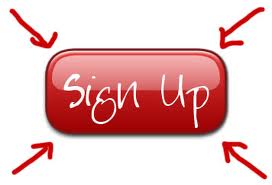 “Developing Mastery through Body and Brain“ – Guest Presenter, Anne Bishop, Ed.M. Mind, Brain and Education Harvard University
“Developing Mastery through Body and Brain“ – Guest Presenter, Anne Bishop, Ed.M. Mind, Brain and Education Harvard University
Practical tips to enhance your teaching skills and understand how the brain learns movement.
AND if you are REALLY interested, Anne will be hosting a 2-day workshop in Sebastopol, CA Feb. 25th and 26th
Fore Details and to register CLICK HERE!
Other Resources/References:
USciences – Learner-Centered Teaching
Phyllis Blumberg, Ph.D.
Director of the Teaching and Learning Center
University of the Sciences in Philadelphia
AISHE – Student-centred learning: What does it mean for students and lecturers?
Geraldine O”Neill and Tim McMahon
University College Dublin
JSTOR – CalTeach UCSC – Where is the Mind?Constructivist and Sociocultural Perspectives on Mathematical Development
Paul Cobb
Educational Researcher, Vol. 23, No. 7. (Oct., 1994), pp. 13-20.
Search: Teaching/learning/curriculum, Student-centered
Lasting Success
/in Featured /by ChantillTeaching is the most courageous form of learning because we teach who we are. The moment we stop learning — or merely stop being curious — whatever depth we had begins to recede. Whatever connection we had begins to dim.
Curiosity, longevity and an authentic presence! Remember the first moment you were in front of an eager student waiting to have some profound wisdom imparted upon them? Was it terrifying? Could you find all the right words? Did you have all the right tools at your disposal? There is so much more to teaching than knowing how to say the right thing. It”s about connecting, learning, serving and performing. When we teach we offer up the best of ourselves, that”s our authentic presence. Can you be effective, be yourself and be as curious today as you were when you started?
Meaningful Work
/in Blog, Featured, Uncategorized /by ChantillIt comes down to this: If you are willing to know yourself deeply and trust what you have to offer, your teaching will be potent, exciting and magnetic. Lasting success – especially financial – is built on this. Your classes will be fuller, your students will keep coming back and your work will have meaning that runs deeper than good marketing and tricks for avoiding burn out.
Meaningful work is a reflection of right livelihood. Meaningful work not only fills a need in the world, but fulfills the one who offers it. Meaningful work is service. Service is compassion, a true desire to add rather than subtract and the path of inquiry and clarity.
Once you have “right view” and apply “right effort” the path unfolds before you. AND this takes work. Finding this takes looking at what’s hard and dark and perhaps what’s scary about who we are. Finding this takes courage, the courage to go deeper on our hardest days or in our darkest moments.
This is how we foster authenticity, meaning and longevity. Teaching truly is an inner path.
So, how do we create meaningful work? First we have to look at what really matters to us. What parts of our current work life do we line up with? What parts bring us joy and were are we resisting?
To get started on this path take a look at “How To Be The Kind of Teacher You Really Are” in the Blog section. This will get your juices flowing and give you some work to do… . A good place to start!
And make sure not to miss details about our upcoming Teacher’s Retreat!
[maxbutton id=”7″]Authentic Presence
/in Featured /by ChantillIt was muggy. Sweat, stale and new, mingled and charged the air. My anonymity made me feel safe. I could hide behind the veil of having no past and no present with these students, relieved that few looked up when I passed them on the treadmills. The students were preoccupied with watching Oprah or mouthing the words to a favorite song. I walked to the locker room more out of not knowing where the classroom was located, and trying not to show it, than for any real need.
Howdy
 How are you showing up? Why are you showing up? Why do you teach? What IS teaching? Why do you care? This is Skillful Teaching: A Whole-person approach to being an expert teacher, not an expert technician. There's a difference. Want to know what it is?
How are you showing up? Why are you showing up? Why do you teach? What IS teaching? Why do you care? This is Skillful Teaching: A Whole-person approach to being an expert teacher, not an expert technician. There's a difference. Want to know what it is?Resources For Right Now
The Power of Mentoring
Archive
- November 2021
- June 2020
- April 2020
- March 2020
- September 2019
- June 2019
- February 2018
- December 2017
- November 2017
- September 2017
- August 2017
- July 2017
- June 2017
- May 2017
- April 2017
- March 2017
- February 2017
- January 2017
- October 2016
- July 2016
- June 2016
- April 2016
- January 2016
- November 2015
- October 2015
- September 2015
- August 2015
- June 2015
- March 2015
- February 2015
- January 2015
- December 2014
- October 2014
- September 2014
- August 2014
- July 2014
- May 2014
- April 2014
- February 2014
- January 2014
- December 2013
- November 2013
- October 2013
- September 2013
- August 2013
- July 2013
- June 2013
- May 2013
- April 2013
- February 2013
- January 2013
- December 2012
- September 2012
- July 2012
- May 2012
- April 2012
- March 2012
- February 2012
- January 2012
- December 2011
- November 2011
- October 2011
- September 2011
- July 2011

